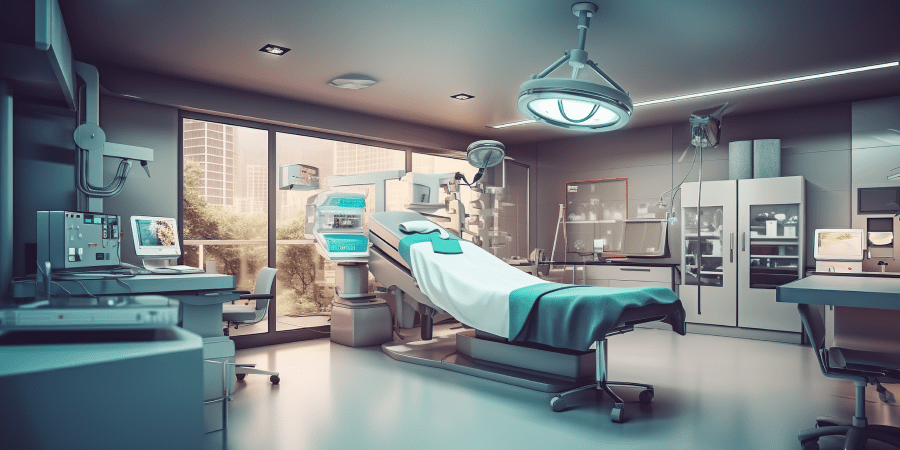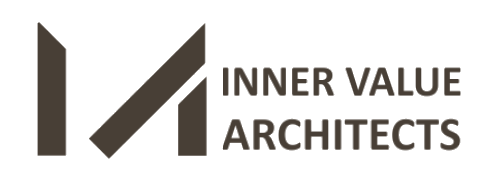In today’s world, we’re all looking for ways to be...
In the realm of healthcare, where the pursuit of healing extends beyond medical treatment, the significance of architecture cannot be overstated. Beyond the practicalities of functionality and efficiency, the design of healthcare settings plays a profound role in influencing the emotional well-being of patients, staff, and visitors. The built environment has the power to shape experiences, evoke emotions, and contribute to an atmosphere of positivity that is integral to the healing process.
As we embark on a journey to explore the intersection of architecture and positivity in healthcare settings, this blog delves into seven key strategies that architects employ to create environments fostering a sense of well-being and optimism. From the infusion of natural elements to the thoughtful integration of art, each strategy contributes to a holistic approach aimed at enhancing the healing journey for all those within these spaces. Join us as we uncover the transformative power of architectural design in healthcare.
Why Healthcare Architect is Important
Healthcare architecture plays a crucial role in shaping the design and functionality of healthcare facilities, and it is important for several reasons:

1. Patient-Centered Care
Healthcare architects focus on creating environments that prioritize the well-being and comfort of patients. Today there are lot of innovations in hospital design elements such as natural light, calming colors, and efficient layouts contribute to a positive patient experience and can impact the healing process. Natural light is not just an aesthetic consideration; it has been scientifically proven to have significant positive effects on mood regulation and circadian rhythms. Architects strategically use windows, skylights, and open spaces to enhance the visual appeal of healthcare facilities, fostering a therapeutic atmosphere.
2. Efficient Workflows
Healthcare facilities involve complex workflows that require coordination among various medical professionals. Architects design spaces that facilitate efficient communication and movement, helping healthcare providers deliver high-quality care in a timely manner. Open and well-lit spaces are often designed to encourage informal discussions and interdisciplinary teamwork, allowing healthcare providers to share insights, expertise, and critical information. The aim is to break down silos and create an environment that promotes a culture of collaboration, enhancing the quality of patient care.
3. Infection Control
The design of healthcare facilities is critical in preventing the spread of infections. Healthcare architects work to create layouts and systems that minimize the risk of infections, including the use of proper ventilation, spacing, and materials that are easy to clean. Proper ventilation is a critical component of infection control in healthcare settings, and architects collaborate with engineers to design ventilation systems that meet stringent standards.
4. Accessibility and Inclusivity
Architects are responsible for ensuring that healthcare facilities are accessible to people of all abilities. This includes designing spaces that comply with accessibility standards and accommodate individuals with disabilities, providing equal access to healthcare services. From accessible entrances equipped with ramps and automated doors to carefully designed interior spaces that accommodate mobility aids, the architectural blueprint is a strategic roadmap toward a healthcare environment.
5. Technological Integration
Healthcare is increasingly reliant on advanced technologies. Architects need to design spaces that can seamlessly integrate technology to support medical equipment, electronic health records, and other digital tools that enhance patient care and improve operational efficiency. Moreover, for creating healthcare projects architects collaborate closely with healthcare professionals and IT specialists to devise environments that can accommodate the omnipresence of electronic health records (EHRs) and other digital tools.
Top Seven Strategies for Healthcare Settings
Creating optimal healthcare settings involves a combination of architectural, environmental, and operational strategies. The following seven strategies are crucial for designing healthcare environments that promote healing, efficiency, and positive outcomes:

1. Natural Light and Ventilation
Natural light has been proven to have a positive impact on mood and overall well-being. Incorporating large windows, skylights, and open spaces in healthcare facilities can maximize the intake of natural light. Adequate ventilation is equally important, as fresh air circulation can contribute to a healthier atmosphere, reducing the risk of infections and creating a more comfortable environment for patients and staff. The thoughtful integration of natural elements into healthcare design reflects a holistic approach to patient care, recognizing the impact of the physical environment on the healing process.
2. Biophilic Design Elements
Biophilic design integrates natural elements into the built environment, fostering a connection with nature. Incorporating features such as indoor plants, water features, and nature-inspired artwork can have a calming effect, reduce stress, and enhance the overall sense of well-being for occupants. The presence of nature in healthcare settings can create a positive distraction for patients and contribute to a more pleasant atmosphere. The deliberate inclusion of nature in healthcare design not only creates visually appealing spaces but also serves as a positive distraction for patients.
3. Color Psychology
The choice of colors in healthcare design is crucial, as different colors evoke different emotional responses. Soft and calming colors have the potential to create a serene and tranquil environment, fostering a sense of peace and relaxation. On the other hand, warmer tones can imbue spaces with a feeling of warmth and comfort, offering a sense of reassurance. Striking the right balance in color choices is crucial, taking into account the specific functions of different areas within the healthcare facility. Thoughtful consideration of color palettes in healthcare design contributes to a holistic and emotional well-being of patients, staff, and visitors.
4. Patient-Centered Room Layouts
Spaces within healthcare facilities should be meticulously designed with the specific needs of patients at the forefront. A well-thought-out layout contributes to the creation of a positive healing environment by prioritizing ease of movement, and overall patient well-being. Patient rooms, in particular, should be designed to offer a sense of privacy and tranquility, providing quiet spaces conducive to rest and recovery. Consideration of factors such as room orientation, placement of furniture, and access to natural light can significantly impact the overall patient experience.
5. Art and Aesthetics
Art, with its inherent ability to uplift spirits and evoke emotions, holds transformative potential within healthcare settings. The integration of aesthetically pleasing artwork, murals, and sculptures becomes a powerful means to create a positive ambiance, offering more than just visual appeal. In healthcare environments, art serves as a valuable visual distraction, providing moments of respite and contemplation for patients, their families, and healthcare staff. Beyond mere decoration, thoughtfully selected and strategically placed art can significantly impact the overall experience within healthcare facilities.
6. Flexibility in Design
The design of healthcare facilities should embrace a philosophy of flexibility to seamlessly accommodate the dynamic landscape of changing needs and advancements in medical technology. A forward-thinking approach involves the creation of modular and adaptable spaces that can readily respond to evolving medical practices, the integration of new technologies, and shifts in patient demographics. This adaptability is crucial for maintaining a positive and future-ready healthcare environment. This versatility is not only cost-effective but also ensures that healthcare facilities remain at the forefront of medical progress.
7. Wayfinding and Accessibility
Navigating a healthcare facility can be stressful, especially for patients and their families. Clear wayfinding signage and intuitive design can reduce confusion and anxiety. Creating accessible spaces for individuals with mobility challenges ensures that everyone, regardless of physical ability, can move through the facility comfortably, contributing to a positive and inclusive environment.
Wrapping Up
In healthcare architecture, the focus extends beyond functionality to the emotional and psychological well-being of patients, staff, and visitors. By incorporating strategies such as natural light, biophilic design, positive distractions, flexibility, privacy, wayfinding, and comfortable furniture, architects can create environments that foster positivity and contribute to the healing process. As the healthcare industry continues to evolve, architects play a pivotal role in shaping spaces that prioritize the holistic well-being of all stakeholders. For an aesthetic approach to hospital design, seeking consultation from architects in Chandigarh can provide valuable insights and expertise in creating visually appealing and therapeutic healthcare environments.










